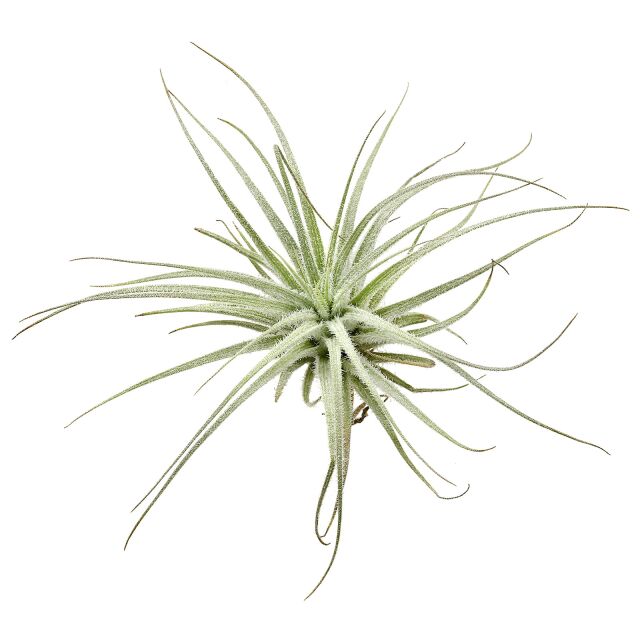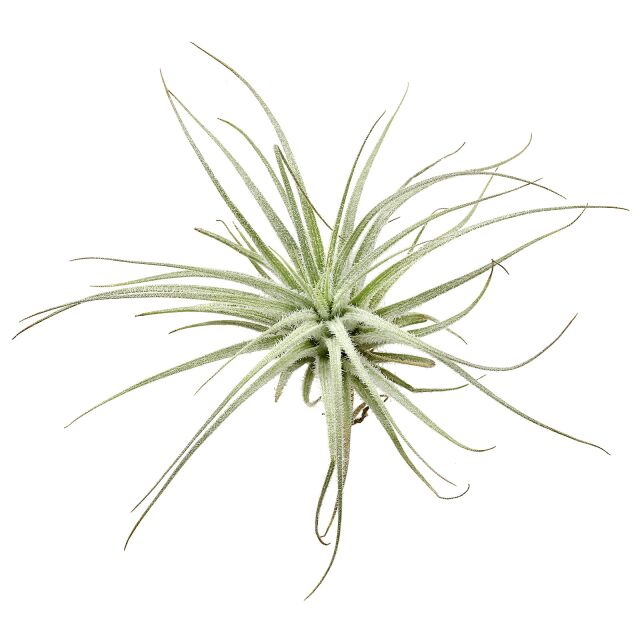Roof air plant



Tillandsia tectorum
Roof air plant
- Rock Tillandsia from the Andes
- Grows to about 6 - 8 cm in height
- Hair-like scales
Sign in or Register
Item question
We’re here for you!
Please enter your question and e-mail and we’ll contact you as soon as possible. It usually takes us up to 24 hours during business days to respond.
Thank you for your question!
Thank you, we’ll get in touch!
Close window
You already sent us a question.
Please wait a few minutes
Description
Most Tillandsias grow in nature as epiphytes on trees and shrubs, but this striking, quite small species grows on rocks or bare ground. Tillandsia tectorum is found in Ecuador and Peru on the western slopes of the Andes, where it hardly ever rains but a lot of fog rises from the Pacific. It grows there in groups, together with other bromeliads and cacti. It is about 6-8 cm high. Many plants there "comb out" the fog to get water, including T. tectorum, whose conspicuous hairs condense water droplets. They also protect the plant from UV radiation in dry conditions. Its name means "the Tillandsia of the roofs", it is said to have been placed on the roofs of some Peruvian villages as a Christmas decoration.
Tillandsia tectorum is counted among the "Grey Tillandsia" type. These usually come from drier places, in this case with little rain but a lot of fog. These "air plants" absorb water and nutrients completely via the many absorbent scales on the leaves, even from very humid air. The roots, if still present, serve as adhesive roots. In culture, such Tillandsias are tied or glued to solid materials such as wood or stones. The light requirement is high. The air must not be very humid and stagnant all the time, because the plants need to be able to dry off. Therefore "Grey Tillandsias" are not well suited for rainforest terrariums, or they need a drier, well ventilated place in them. One sprays Tillandsia tectorum with soft water about once to three times a week. An orchid and Tillandsia fertiliser can be added with every second watering. Propagation is done by cutting off pups.
Tillandsia tectorum with its silvery-grey-white, rounded leaf rosettes is a special appearance among the "air plants". It can be attached to rock or wood in a bright spot and is particularly suited to designs inspired by semi-deserts.
Terrarienpflanzen
Our terrarium plants give every terrarium an individual, natural atmosphere and at the same time provide a healthy environment for all terrarium inhabitants. Our wide range of tropical, subtropical and even arid plants are easy to combine and enhance any terrascape. Whether it's strong succulents, subtle tillandsias, eye-catching neoregelias or wonderful orchids - we offer terrarium plants for different terrascapes from rainforest to desert.
General information
Please choose a variant to see more information.
| Item no. |
|
| EAN | |
| Weight | |
| Shipping weight |
Customers ask customers
You have questions about this product? Ask other customer or our support team about this product!